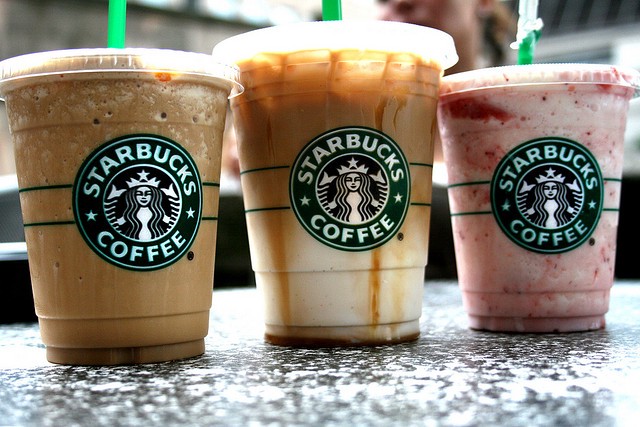Starbucks’ #RaceTogether Makes Unrealistic Assumptions About Both Race and Work

Yesterday, Ester wrote about Starbucks’ new #RaceTogether initiative, in which Starbucks invites its baristas and patrons to have honest conversations about race, in the name of educating each other and sharing diverse perspectives.
There are about one bajillion problems with this, most of which you can read as Twitter responses to the #racetogether hashtag (seriously, Twitter is putting out some of its best work right now).
Let’s start with the fact that the #RaceTogether campaign photos only featured white people, or that Starbucks’ SVP of Global Communications, Corey DuBrowa, closed his Twitter account after the #RaceTogether backlash. (UPDATE: DuBrowa has since re-opened his Twitter account.)
But there’s one problem that I haven’t yet seen anyone write about, one that I didn’t understand until I went to a Starbucks myself to see #RaceTogether in action.
When I arrived at the Starbucks, I told myself that I would bring up #RaceTogether if the opportunity became available. I wouldn’t be the jerk who said “I’d like a tall soy cappuccino and I’d like to know why cops keep shooting unarmed black men,” but I did want to ask “so, have people been starting conversations about race?”
But there was literally no time to put this conversational query into action. When you go to a Starbucks, there is nearly always a line of people, and the baristas process individual orders as fast as possible — one takes your coffee order and starts making it even before you hit the front of the line, and another swipes your card without asking for tip or signature. Then you get your coffee and you get out of the way. That’s how Starbucks works.
It makes me think that #RaceTogether is founded on this outdated idea of the workplace, one where we linger to chat with our favorite baristas and where everyone has time for a casual conversation in between lazy coffee pours for the few loyal customers who wander inside. It’s like a Central Perk fantasy, or Luke’s Diner in Gilmore Girls. The barista as daytime bartender, ready to hear your troubles, check your privilege, and eventually go out with you.
Coffee shops don’t work like that anymore. Even bars don’t really work like that anymore. #RaceTogether is based on a fictional idea of how we can all solve racism over a cup of coffee, but it’s also based on a fictional idea that baristas have the time to have these conversations in the first place.
I tweeted this from inside the Starbucks as soon as I figured it out:
But #racetogether is as much abt the myth that baristas have time to chat with patrons as it is abt the myth of solving racism at Starbucks.
It’s a mismatch of two ideals: the ideal barista who has all the time in the world to listen and nurture and indulge you, and the ideal barista who is busy earning Starbucks money by operating with a predetermined economy of motion that offers no room for conversation.
Maybe Starbucks’ next hashtag should be #WorkTogether, and we can talk about labor conditions for hourly workers, and a system that literally works to get as much profit out of each person as possible.
We’ll address that as soon as we finish addressing racism, which we can do just as soon as this Starbucks line eases up a little bit and there’s a free minute to go bother the barista.
Postscript: I wrote this piece in the Starbucks, and when I was packing up to leave I noticed that the line wasn’t very long, so I hung around the end of it until the barista was free and then asked “so, have people been talking to you about #RaceTogether?” The answer was, as expected, “no.”
Photo credit: poolie
Support The Billfold
The Billfold continues to exist thanks to support from our readers. Help us continue to do our work by making a monthly pledge on Patreon or a one-time-only contribution through PayPal.
Comments